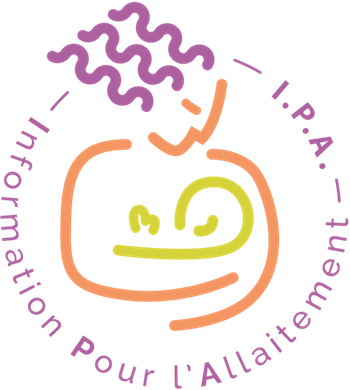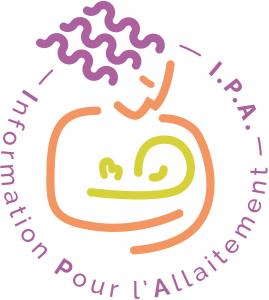Catégories
 > Pratique de l'allaitement > Connaissances vis à vis de l'allaitement > Pratique de l'allaitement > Connaissances vis à vis de l'allaitement
Connaissances vis à vis de l'allaitement |
Documents disponibles dans cette catégorie (125)
Article : document cartographique imprimé
Morgan Ryan, Auteur ; Julie Smith, Auteur |Introduction: Pharmacists are one of the most accessible and trusted professionals in the Australian health care system and can have a large impact in supporting and encouraging breastfeeding. Aim: This study aimed to research the knowledge,[...]Article : texte imprimé
Zixin Lou, Auteur ; Guo Zeng, Auteur ; John G. Orme, Auteur |Background: Despite the high breastfeeding initiation rate in China (> 90%), the low exclusivity rate is of concern. Some traditional behaviors, combined with increasing popularity of infant formula, may negatively affect future breastfeeding [...]Article : texte imprimé
Catherine M. Pound, Auteur ; Kathryn Williams, Auteur ; Renee Grenon, Auteur |Background: Physicians’ attitudes and recommendations directly affect breastfeeding duration. Yet, studies in many nations have shown that physicians lack the skills to offer proper guidance to breastfeeding mothers. Objective: This study a[...]Article : texte imprimé
Shamini Ramoo, Auteur ; Tuyet Anh Trinh, Auteur ; Jane Elizabeth Hirst, Auteur |Background: The benefits of breastfeeding to both maternal and infant health are vast and widely known. The aim of this study was to elicit the rates of exclusive breastfeeding, early initiation of breastfeeding, and colostrum feeding and to det[...]Article : texte imprimé
In the border, there are barriers for not breastfeeding; these include mothers who delivered babies by C section have less schooling, did not have prenatal care, were not told to breastfeed, have no maternity leave, have low income, have no acce[...]Article : texte imprimé
A. Strauss, Auteur ; Adetola Louis-Jacques, Auteur ; La Leche League France, Traducteur |Article : texte imprimé
Background: Speech-language pathologists provide infant feeding assessment and intervention; their training in breastfeeding management is highly variable. Research aim: The purpose of this study was to evaluate student attitudes toward bre[...]Article : texte imprimé
Alison M. Stuebe, Auteur ; Karen Bonuck, Auteur ; Reuben Adatorwovor, Auteur |Background: Women with gestational diabetes mellitus (GDM) and their infants are at increased risk of developing metabolic disease; however, longer breastfeeding is associated with a reduction in these risks. We tested an intervention to increas[...]Article : texte imprimé
Corrine S. Casal, Auteur ; Ann Lei, Auteur ; Sera L. Young, Auteur |Background: Breastfeeding provides beneficial health outcomes for infants and their mothers, and increasing its practice is a national priority in many countries. Despite increasing support to exclusively breastfeed, the prevalence at 6 months [...]Article : texte imprimé
Laurie B. Jones, Auteur ; Emily A. Mallin, Auteur |Dr. MILK® (Mothers Interested in Lactation Knowledge) is an online and in-person support network to help physician mothers achieve their personal breastfeeding goals. Physician mothers have been defined as a high-risk breastfeeding group because[...]Article : texte imprimé
Sofia Colaceci, Auteur ; Angela Giusti, Auteur ; Elise M. Chapin, Auteur |Introduction: Breastfeeding training has a crucial role in increasing healthcare professionals' attitudes and in improving professional support for breastfeeding. The collaboration between the Italian National Institute of Health, UNICEF, and th[...]Article : texte imprimé
Jennifer A.F. Tender, Auteur ; Sandra Cuzzi, Auteur ; Terry Kind, Auteur |Background: Previously reported breastfeeding curricula for residents have combined different teaching methods, have focused on knowledge and attitudes, and have been time-intensive. Objective: This study aimed to evaluate 3 time-efficient [...]Article : texte imprimé
Dilek Orbatu, Auteur ; Suna Yildirim Karaca, Auteur ; Demet Alaygut, Auteur |Objective: In this study, we aimed to evaluate the quality, reliability, and utility of breastfeeding videos on YouTube. Materials and Methods: We conducted a YouTube search with the keyword “breastfeeding education” and limited our search re[...]Article : texte imprimé
Adam K. Lewkowitz, Auteur ; Julia D. López, Auteur ; Richard I. Stein, Auteur |Background: Socioeconomically disadvantaged (SED) African American women with overweight or obesity are less likely to breastfeed. Objective: To test whether a home-based lifestyle intervention impacts breastfeeding initiation rates in SED Af[...]Article : texte imprimé
Laurie B. Griffin, Auteur ; Julia D. López, Auteur ; Megan L. Ranney, Auteur |Background: Low-income women are less likely to breastfeed than high-income women. Technology-based interventions demonstrate promise in decreasing health disparities. We assessed whether increased use of breastfeeding smartphone applications (a[...]Article : texte imprimé
Courtney Thomas, Auteur ; Mary Ann O'Riordan, Auteur ; Lydia Furman, Auteur |Background: Breastfeeding rates among urban, low-income populations are lower than the national average, and social support can affect breastfeeding initiation and duration both positively and negatively. Research aim: This study aimed to d[...]Article : texte imprimé
Background: Although increasing numbers of large companies are complying with demands for a breastfeeding-friendly workplace by providing lactation rooms and breast-pumping breaks, the effectiveness for intention to use breast-pumping breaks to [...]Article : texte imprimé
Lydia Furman, Auteur ; Steve Killpack, Auteur ; Lisa Matthews, Auteur |Purpose: Our objective was to pilot a method of engaging fathers/partners of high-risk inner-city mothers in breastfeeding support. Materials and Methods: Breast for Success was a breastfeeding promotion initiative with a father engagement co[...]Article : texte imprimé
Nikita Wheaton, Auteur ; Jacinta Lenehan, Auteur ; Lisa H. Amir, Auteur |Background: New mothers often need support to establish and maintain breastfeeding, and rural women may find it difficult to access breastfeeding resources locally. There are many smartphone applications for breastfeeding mothers; however, very[...]Article : texte imprimé
Barbara Baranowska, Auteur ; Marta Malinowska, Auteur ; Ewelina Stanaszek, Auteur |Background: Extended breastfeeding is rare in Poland, and lack of acceptance and understanding is often evident in public opinion. The ability to provide reliable information about breastfeeding beyond infancy depends on health professionals’ l[...]Article : texte imprimé
Abigail Harrison, Auteur ; Shani Fletcher-Groves, Auteur ; Georgiana Gordon-Strachan, Auteur |Background: Exclusive breastfeeding rates (EBRs) may be influenced by sociodemographic and sociocultural factors, including maternal age, socioeconomic status, education, and breastfeeding knowledge. The EBR in Jamaica has been low and declinin[...]Article : texte imprimé
Background The need for donor human milk has accelerated both locally and globally. To remain sustainable, human milk banks need to maintain effective recruitment including frequent donations of adequate volumes. Research aims To determine [...]Article : texte imprimé
Jennifer M. Godbout, Auteur ; Whitney N. Goldsberry, Auteur ; Tanya E. Franklin, Auteur |Background: Strong recommendations have been made for exclusive breastfeeding of infants for the first 6 months of life, with continuation throughout the first year. In an attempt to optimize support for breastfeeding, particular barriers in po[...]

























